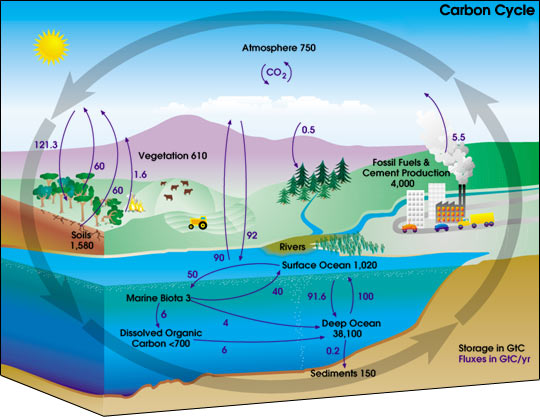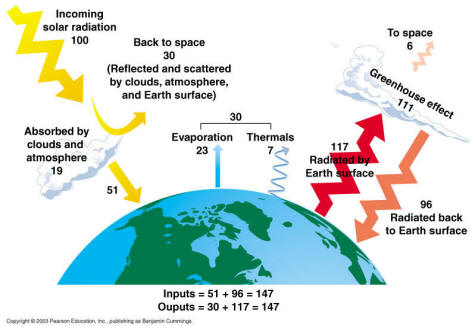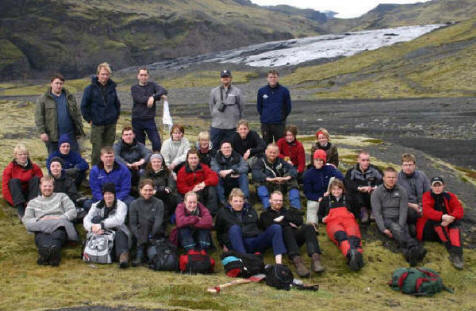

Global Climate Change
Tuesday & Thursday
Week 9
Announcements:
Weekend Homework: Calculate your Ecological Footprint - follow the instructions on the Moodle site, and answer the questions listed. Due: nextThursday, beginning of class
Thursday - Question of the Day: What is some on-the-ground evidence of global climate change, and what are its implications?
Climate change in the Arctic:
Quote from Jonathan Overpeck, member of the IPCC (co-winners of 2007 Nobel Peace Prize) - "What we see in the Arctic is a dead canary in a coal mine."
National Snow & Ice Data Center: Arctic Sea Ice News


Tuesday -
The Carbon Cycle:

In any given year, tens of billions of tons of carbon move between the atmosphere, hydrosphere, and geosphere. Human activities add about 5.5 billion tons per year of carbon dioxide to the atmosphere. The illustration above shows total amounts of stored carbon in black, and annual carbon fluxes in purple. (Illustration courtesy NASA Earth Science Enterprise) (site: http://earthobservatory.nasa.gov/Library/CarbonCycle/carbon_cycle4.html )
What are the Sources & Sinks of carbon in the atmosphere and elsewhere?
Be able to reconstruct the most important parts of the carbon cycle.



What are the implications of warmer temps?
Glaciers on the move...?
http://www.usgs.gov/newsroom/article.asp?ID=2054&from=rss


Oblique aerial photograph of Sólheimajökull, an outlet glacier on the southern margin of MÝRDALSJÖKULL, with black tephra from the 1918 eruption of Katla. View looking toward the northeast on 30 October 1985. The plateau of the Katla caldera is visible in the background. Photograph by Oddur Sigurðsson, National Energy Authority.
Oblique aerial photograph of the Lambatungnajökull outlet glacier on 1 October 1990. View looking to the northwest toward the eastern margin of the VATNAJÖKULL ice cap. Photograph no. 12045v by O.S., NEA.

Participants in the Glacial Geology course "Rof, setmyndun og landmótun jökla", May 2004.
http://www3.hi.is/~oi/solheimajokull_photos.htm
Thermohaline Circulation -
http://www.wunderground.com/education/abruptclimate.asp

Use of computer simulation models to predict impacts of climate change, and to show main causes of that change:

The Oceans are usually a net sink for carbon - it is stored in ocean water and sediments. But increasing levels of CO2 in the atmosphere mean increasing levels of CO2 in the ocean, and:
CO2
+ H2O ![]() H2C03
H2C03
What might this mean for marine life? (the chalk in vinegar experiment...)
For Carbon levels in the atmosphere?
What are some examples of positive feedback loops (a self-reinforcing, often unstoppable process) from Kolbert's book Field Notes from a Catastrophe? (think especially about the Arctic)
e.g.:
Melting sea ice (summer pack ice decline): melting ice exposes open ocean water --> water is darker than ice --> the darker surface absorbs more heat from the sun (instead of reflecting it back out to space) --> more heat absorption makes the ocean warmer --> warmer ocean leads to less sea ice development... and so on & on...
Melting permafrost is another example of a positive feedback
Increasing cover of shrubs in the tundra (seen via repeat photographs of the tundra)
Arrival of Puffins from further to the south into the Guillemot nesting area
...can you think of any others? these are the ones we outlined in class on 11/9